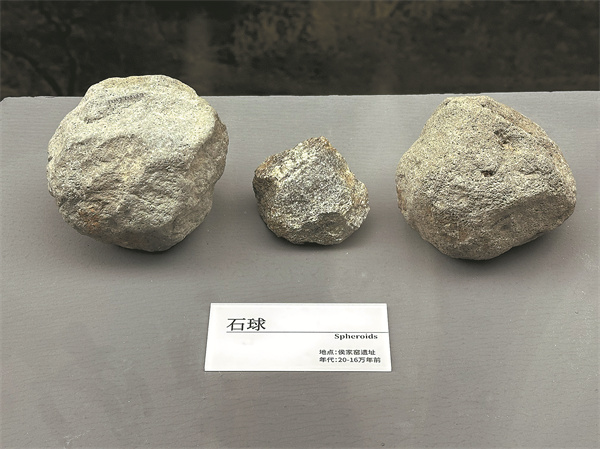Museum unveils million-year legacy of Nihewan
By WANG QIAN | China Daily | Updated: 2025-04-01 07:28

The site yielded more than 4,000 horse tooth fossils, leading experts to speculate that the stone balls were specialized tools for hunting wild horses.
"Ancient humans likely tied ropes around the stone balls to create bolas, which they threw to strike animals' bodies or heads," she explains.
Another groundbreaking discovery that Wei doesn't want visitors to miss is the evidence of a culture that processed ochre, which is used to make pigments, discovered at the Xiamabei, a 40,000-year-old archaeological site in Nihewan.
Small pieces of hematite and grinding tools are displayed together in the exhibition.
"This discovery pushes the history of hematite pigment use in East Asia back to 40,000 years ago. Since pigments were likely used for body decoration, it suggests that humans had developed a sense of aesthetics by this period," Wei says.
Additionally, experts found plant fiber traces on the surfaces of some stone flakes, indicating that ancient humans may have bound small stone flakes to create composite tools, reflecting the increasing complexity of their technology and behavior.
Over the past century, archaeological discoveries at Nihewan have pushed the timeline of human origins in China and East Asia back to approximately 1.7 million years ago.
With the launch of the project of chasing the human origins in Nihewan by the provincial government in Hebei, further archaeological revelations are anticipated.
























